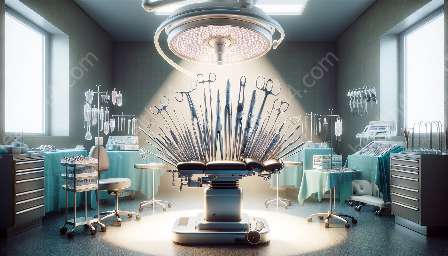Drainage catheters are essential medical devices used in various surgical procedures to drain fluids from the body. In this guide, we will delve into the types, uses, and compatibility of drainage catheters with other surgical instruments and medical devices. We'll explore the key considerations for using drainage catheters, their benefits, and potential risks, providing a comprehensive understanding of this vital medical tool.
Overview of Drainage Catheters
Drainage catheters are flexible tubes designed to remove fluids from a body cavity or organ. They play a crucial role in managing post-operative fluid accumulation or addressing medical conditions that cause abnormal fluid buildup, such as ascites or pleural effusion.
These catheters come in various sizes, shapes, and materials to suit different clinical needs. The choice of a specific drainage catheter depends on the nature of the procedure, the patient's condition, and the healthcare provider's preferences.
Types of Drainage Catheters
There are several types of drainage catheters commonly used in medical settings, each serving specific purposes:
- Pleural Drainage Catheters: These are utilized to drain fluid or air from the pleural space around the lungs, aiding in the treatment of conditions such as pleural effusion or pneumothorax.
- Peritoneal Drainage Catheters: These catheters are designed for draining fluid from the abdominal cavity, addressing conditions such as ascites or certain types of abdominal infections.
- Biliary Drainage Catheters: Used to remove bile from the liver or bile ducts, these catheters are deployed in cases of biliary obstruction or liver diseases.
- Nephrostomy Drainage Catheters: These are inserted into the kidney to drain urine, commonly employed in cases of urinary obstructions or kidney stones.
- External Ventricular Drainage (EVD) Catheters: These are specialized catheters used to drain cerebrospinal fluid from the brain, often used in neurosurgical or critical care settings.
Uses of Drainage Catheters
Drainage catheters serve diverse clinical purposes, and their applications extend across different medical specialties. Common uses of drainage catheters include:
- Managing post-operative fluid accumulation following surgeries such as cardiothoracic procedures, abdominal surgeries, or orthopedic interventions.
- Treating conditions that lead to abnormal fluid accumulation in specific body cavities, such as pleural effusion, ascites, or chylous effusion.
- Facilitating the drainage of bodily fluids in patients with certain medical conditions, such as those with biliary obstructions, kidney disorders, or neurological conditions affecting cerebrospinal fluid dynamics.
- Providing symptomatic relief and aiding in the diagnosis and management of various medical conditions, such as cystic collections, abscesses, or fluid collections related to malignancies.
Compatibility with Surgical Instruments
Drainage catheters are often used in conjunction with various surgical instruments to facilitate their insertion and proper placement. They are compatible with tools such as trocars, dilators, and insertion needles, which are essential for creating pathways for the catheters to reach the target sites within the body.
During minimally invasive procedures, drainage catheters may be guided and positioned using imaging technologies such as ultrasound or fluoroscopy, which further enhances their compatibility with surgical instruments and equipment.
Compatibility with Medical Devices & Equipment
Drainage catheters are compatible with a range of medical devices and equipment, enabling healthcare providers to optimize their usage and ensure safe and effective drainage procedures. Some compatible medical devices and equipment include:
- Drainage Bags and Reservoirs: These are used to collect and measure the drained fluids, providing essential information for clinical assessment and management.
- Vacuum Systems: Certain drainage catheters require vacuum assistance for fluid extraction, and compatible vacuum systems play a crucial role in maintaining the desired drainage pressure.
- Imaging Modalities: Medical imaging devices, such as ultrasound machines and fluoroscopy systems, are utilized to visualize the target area and guide the insertion and positioning of drainage catheters with precision.
- Flushing and Irrigation Devices: For certain types of drainage catheters, flushing and irrigation devices are used to maintain catheter patency and prevent blockages, ensuring uninterrupted drainage.
Considerations and Best Practices
When utilizing drainage catheters, healthcare providers need to consider several factors to ensure their safe and effective usage. Some key considerations and best practices include:
- Patient Selection: Assessing the patient's clinical condition, comorbidities, and diagnostic findings to determine the suitability of drainage catheter placement.
- Procedural Planning: Collaborating with multidisciplinary teams to establish an optimal procedural approach, including the selection of appropriate catheter type, size, and insertion technique.
- Infection Control Measures: Implementing strict aseptic techniques during catheter insertion and maintenance to minimize the risk of infection and other complications.
- Post-procedural Care: Providing clear instructions to patients regarding catheter care, activity restrictions, and recognizing signs of potential complications, ensuring optimal post-procedural outcomes.
- Regular Monitoring and Maintenance: Periodic assessment of catheter function, drainage output, and patient comfort, coupled with a proactive approach to catheter maintenance and troubleshooting.
Benefits and Risks
Drainage catheters offer various benefits in managing fluid-related medical conditions and post-operative fluid accumulation. These include providing symptomatic relief, aiding in diagnosis and treatment, and promoting patient comfort and well-being.
However, like any medical intervention, the use of drainage catheters also carries certain risks and potential complications. These may include catheter dislodgement, infections, bleeding, or blockages, emphasizing the importance of skilled and vigilant management of drainage catheters.
Conclusion
Drainage catheters are indispensable tools in surgical and medical practices, offering valuable solutions in managing complex medical conditions and post-operative care. Their compatibility with surgical instruments, medical devices, and equipment enhances their utility and ensures successful patient outcomes. By understanding the diverse types, uses, and considerations associated with drainage catheters, healthcare providers can optimize their usage and provide comprehensive care to patients requiring drainage interventions.


